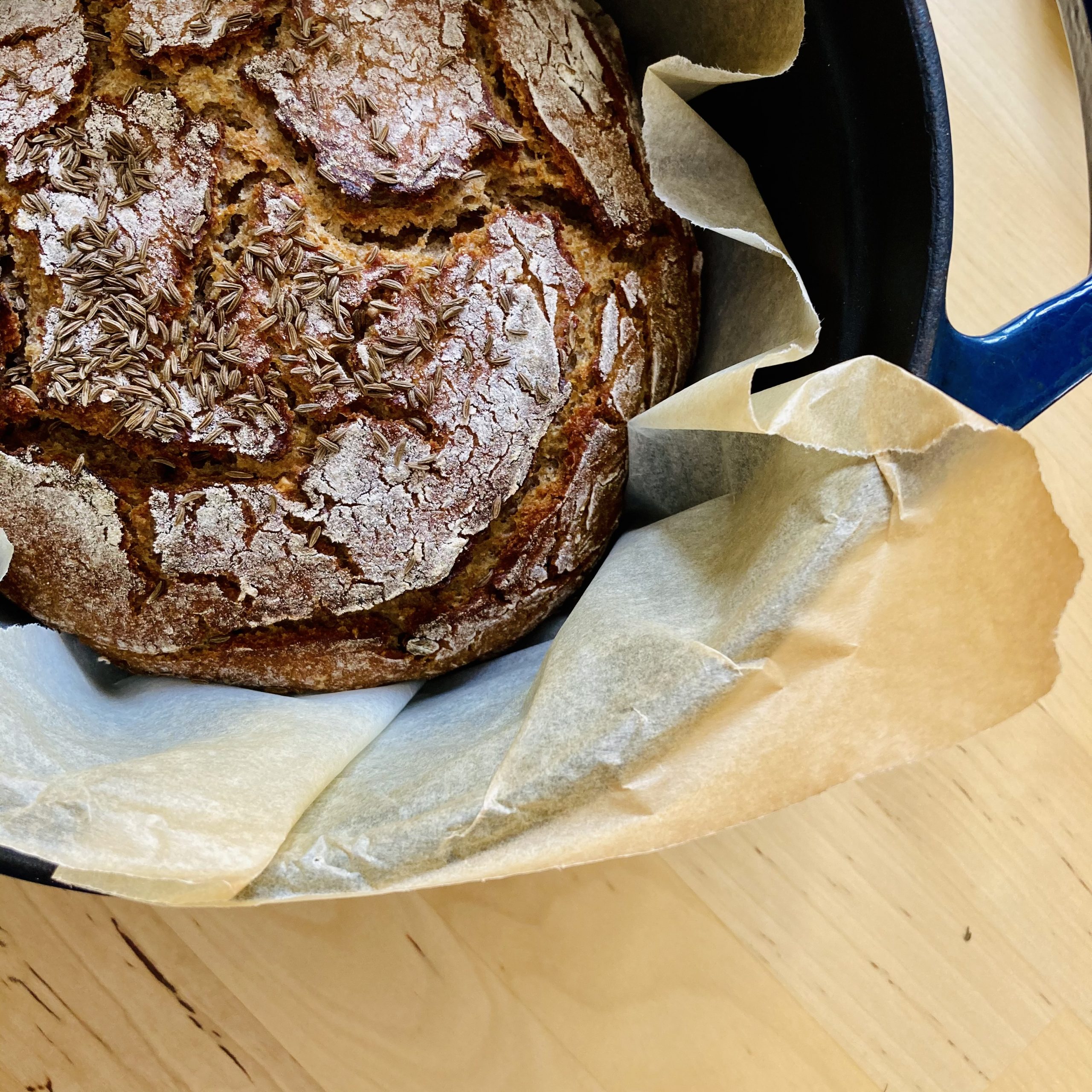The rain hasn’t stopped for days, the wind is loud enough that its gusts disturb my working from home playlist. I set coffee to brew slowly and I pick up Laurie Colwin’s Home Cooking without a particular goal. My best friend sent ma a copy a few weeks ago, just over a year after she gifted me my first flour kit from Bread Ahead. This isn’t a coincidence. We also both happen to resent induction hobs as we cannot control the flame that warms our moka pots. They are good for the environment, the induction hobs, I remind myself as I open the book at a random page. Bread Baking Without Agony, I read at the top of the page. Hooked, I rewind to the beginning of the chapter. I start reading about Laurie making bread for the first time with a friend, the process spread throughout a day as they drank coffee then elevenses and then had lunch. My eyes move fast because I don’t understand the logic. To me, baking bread is a solo walk. I break the day before the evening with my bread routine. I feed my starters when I cannot face cooking for myself. The coffee overflows. I don’t bother; I continue reading instead. I discover Laurie’s second loaf, the taste of yeast that mounts in my mouth cuts my enthusiasm for a coffee short. Finally, it all makes sense. ‘It’s really a question of arranging matters so that the dough suits your time table rather than the other way around.’ Laurie Colwin quotes Elizabeth David from her book English Bread and Yeast Cookery.
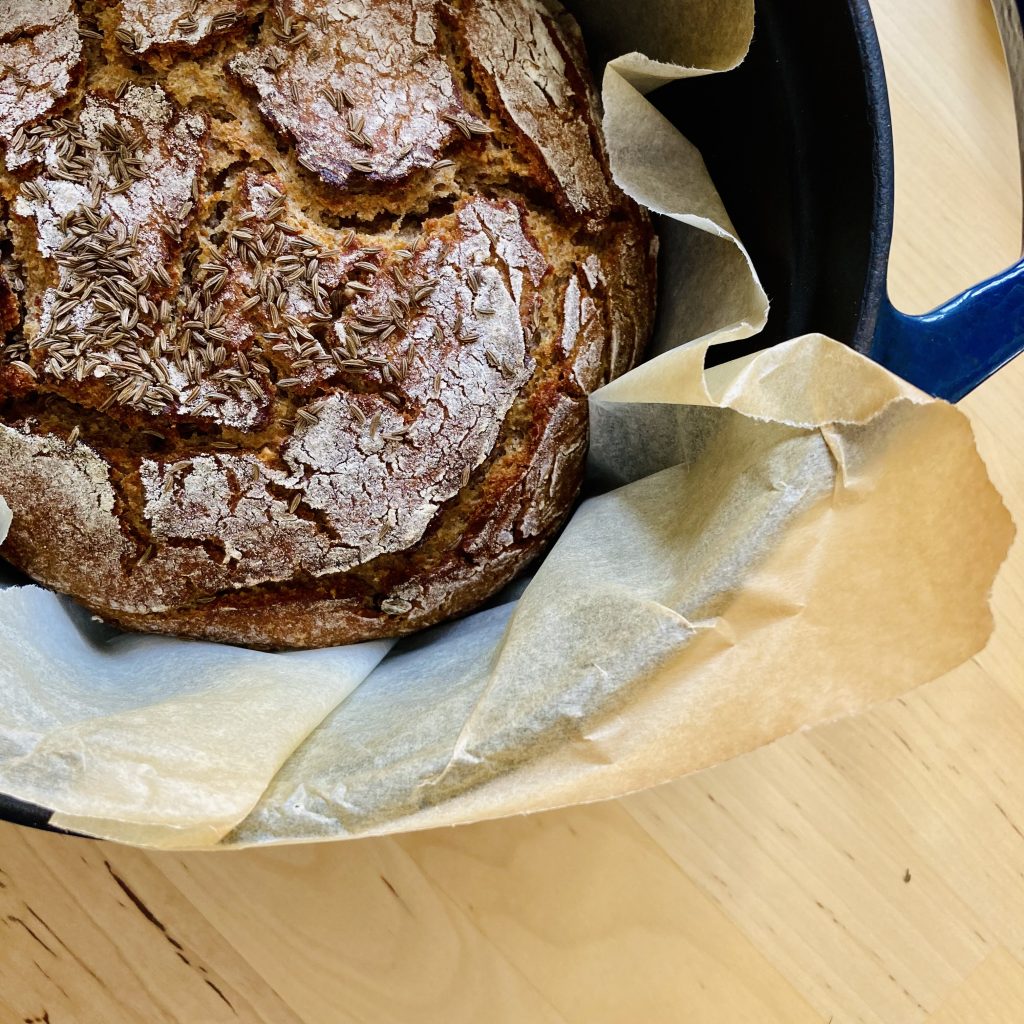
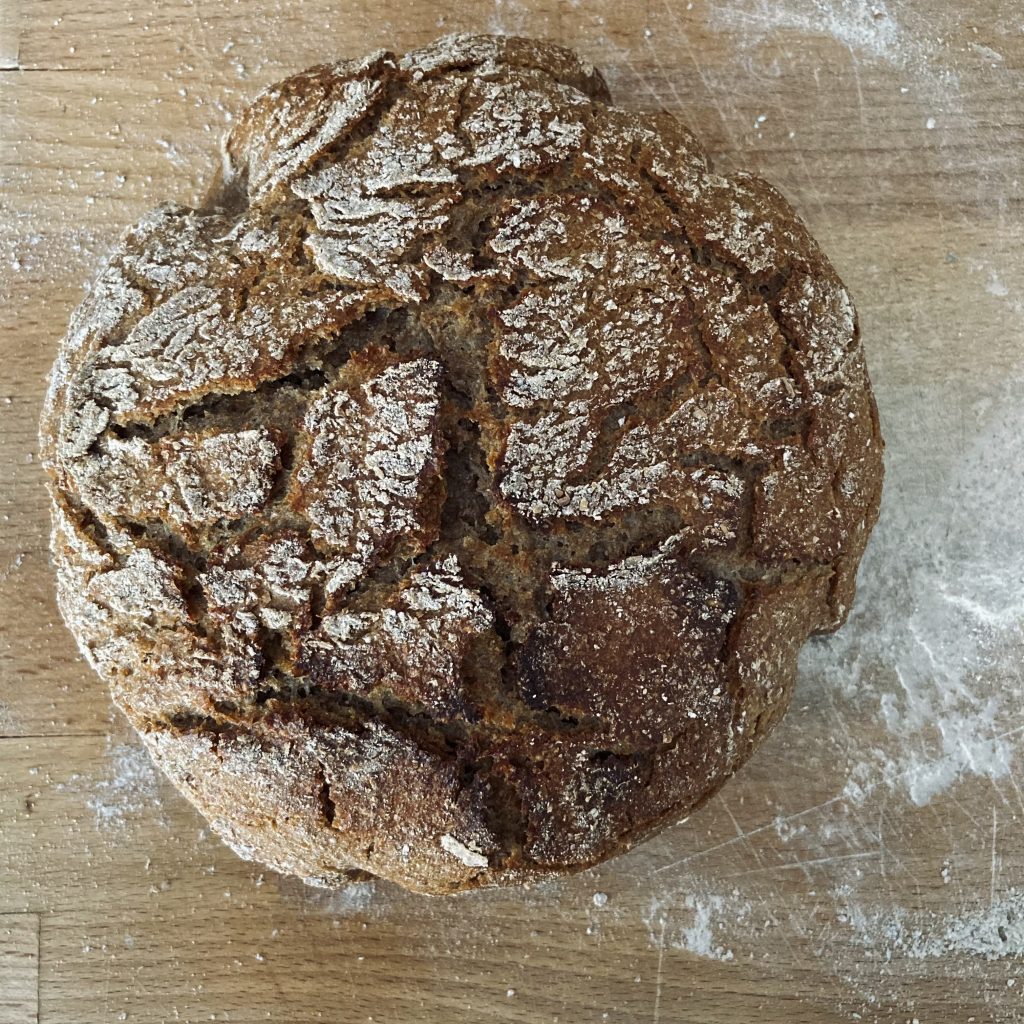
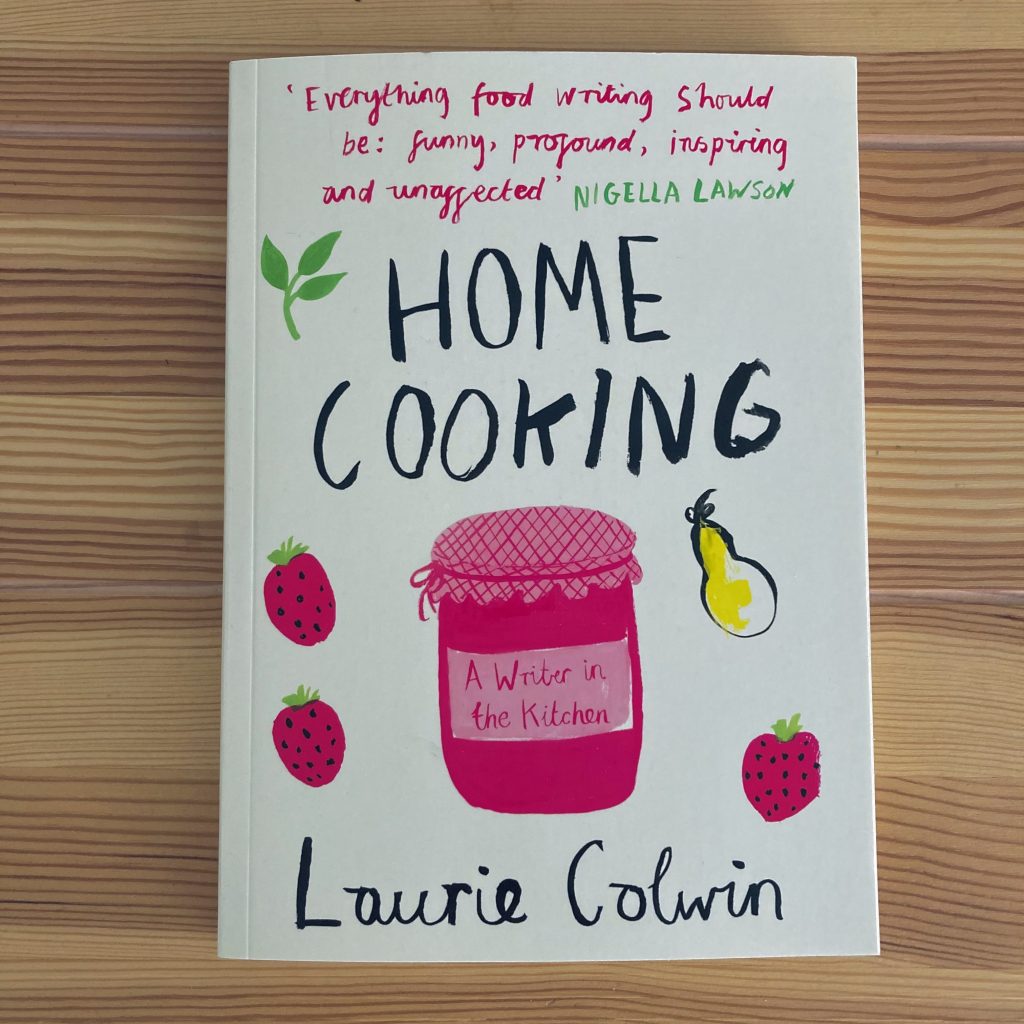
Last spring I baked my first bread too. It tasted of yeast instead of wheat, just like Laurie Colwin’s bread did. I worked on my recipe and nourished my starters. I divided them and gave bits away to friends. They strengthened and my bread started to taste like home. As I grew more confident with my kneading skills, I started to improvise and to play with flour types. Today’s update on my bread routine is one to break recipes. There is none: your kitchen, your bread. However, there is the process whereby the bread can grow, that is your basic white tee-shirt in your wardrobe. Take a spoonful of starter and dissolve it in lukewarm water. Incorporate the flour. Knead if you’re using a wholemeal starter, three times 10 minutes with a 5-minute break in between each session, though rounds might differ with your surroundings (e.g. humidity, warmth etc.) so remember to listen to your dough and fingers. If you’re making rye bread, you don’t need to knead: simply mix with the help of a wooden spoon, and a Danish whisk is a worthwhile investment here. Cover with a towel and let it rise for as long as it suits your timetable, that is overnight in my kitchen. Punch the dough down next. Let it rise. Let it rest again (I allow around 4 hours to rest). Bake.
In between, there is fun in the form of fluff and powder: which flours will you be using today? I’ve developed a passion for going around farmer’s shops to find new types of flours for my bread. Wessex Cobber Bread Flour. Wholemeal or White Rye Flour. Six Seeds Bread Flour. Spelt, Wholemeal, Buckwheat. You can also add seeds: fennel, cumin, mustard, sesame. It’s an endless party with hundreds of jewellery and accessories to spark your basic white tee-shirt. Go and find your bread.
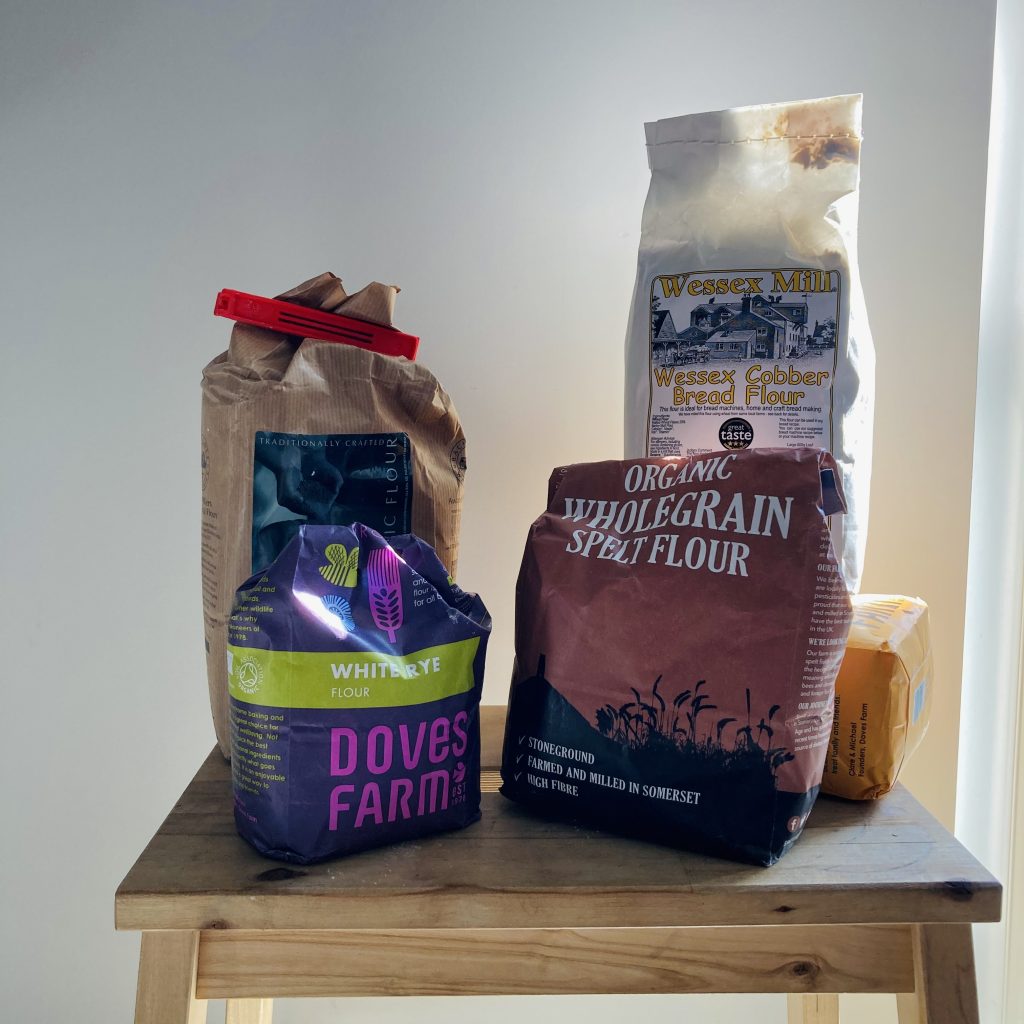
When it comes to portions, I aim for a 75% hydration dough, approximately. I don’t measure when I make bread as I prefer to work with ratios. I tend to work on the basis of 2/3 of the starter’s mother flour (rye or wholemeal), 2/3 of another flour and 1/3 of spelt flour for the crust.
Now, on to baking. If you own an oven proof casserole and a lid then you’ve a winning combo. Pre-heat the oven to 240c fan with the casserole (lid on) inside. Once the oven is at its hottest, carefully insert the bread in the casserole on a layer of baking sheet. Cover and return to the oven for 30 minutes. After which, you may lower the temperature to 220C for wholemeal but leave it at 240C for rye. In either case, remove the lid and bake for a final 20 minutes. If you don’t have a casserole, fear not, a baking tray will do just fine. I’d advise baking at 240C throughout, but do keep an eye out as the weather turns fast in an oven.
Leave your bread to cool down on a rack. Break the dough and bite into the crust.
Margaux, June 2021

